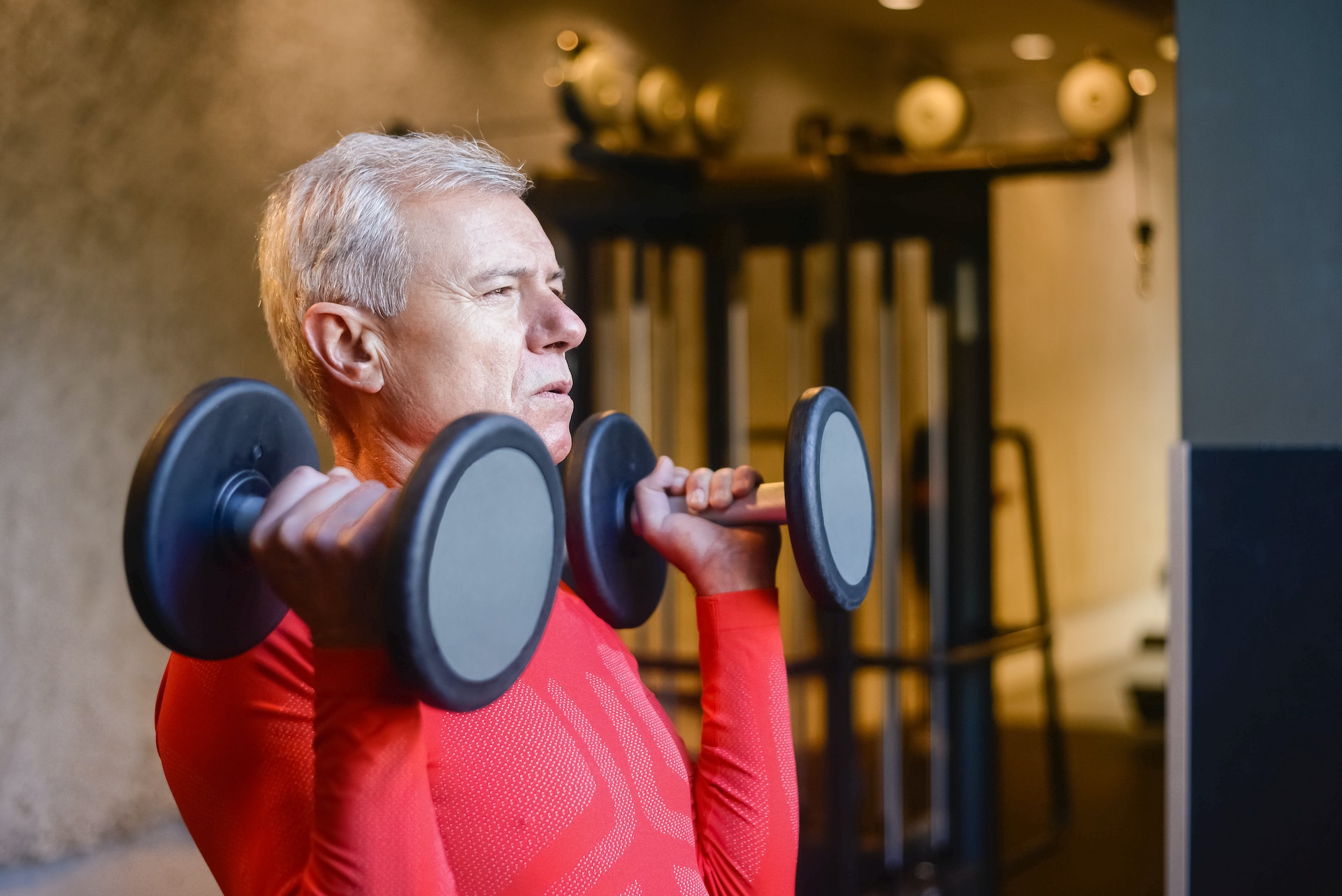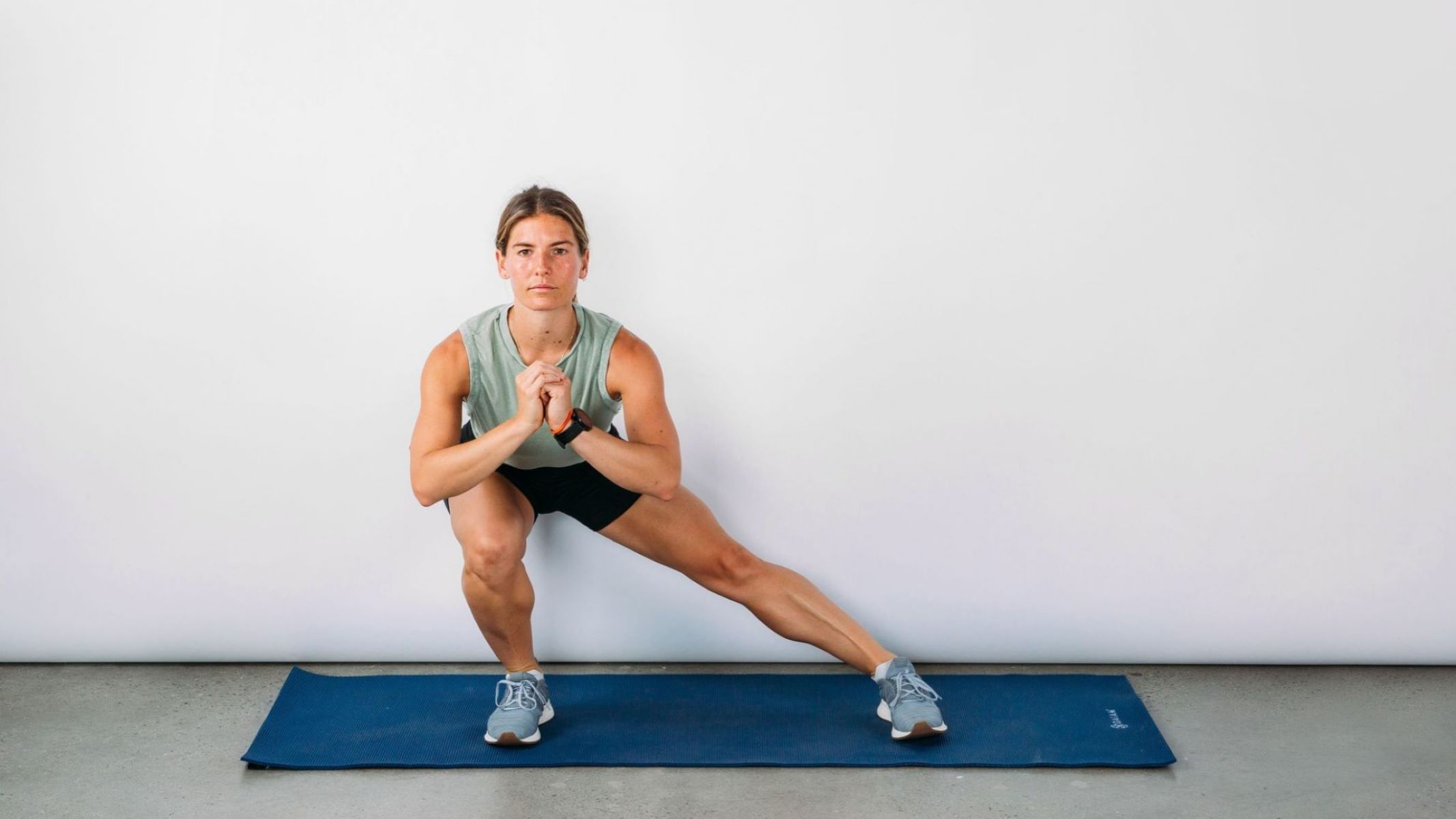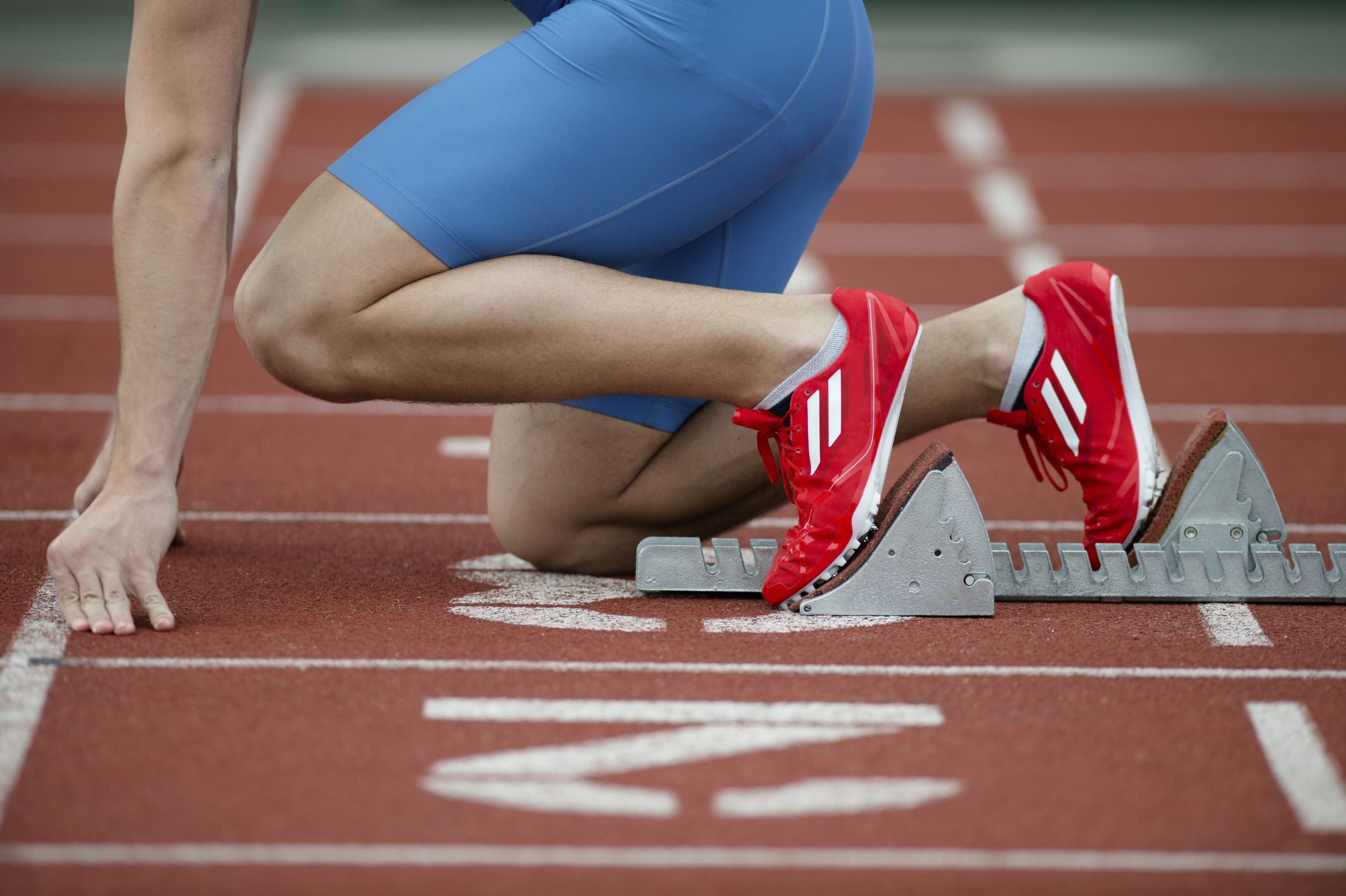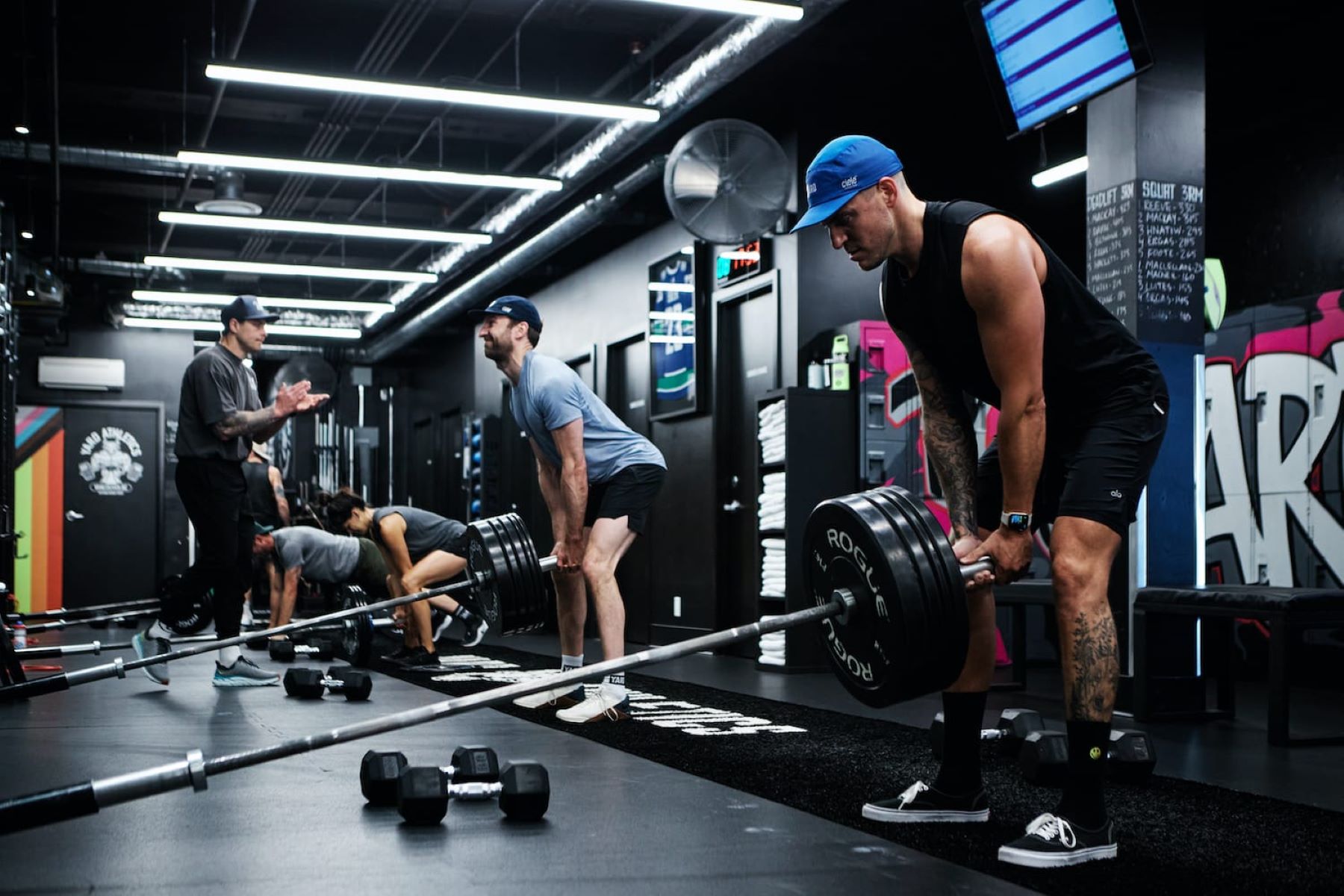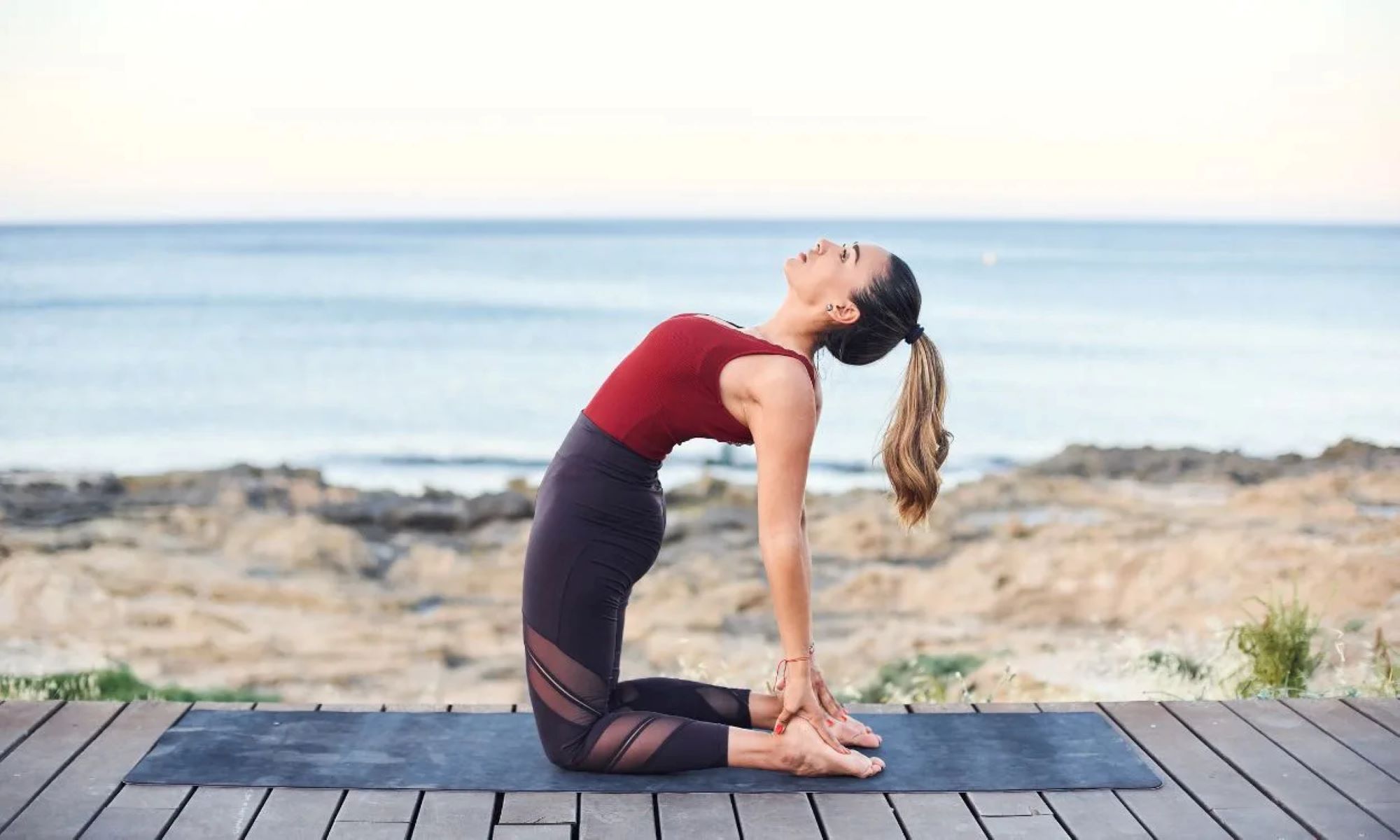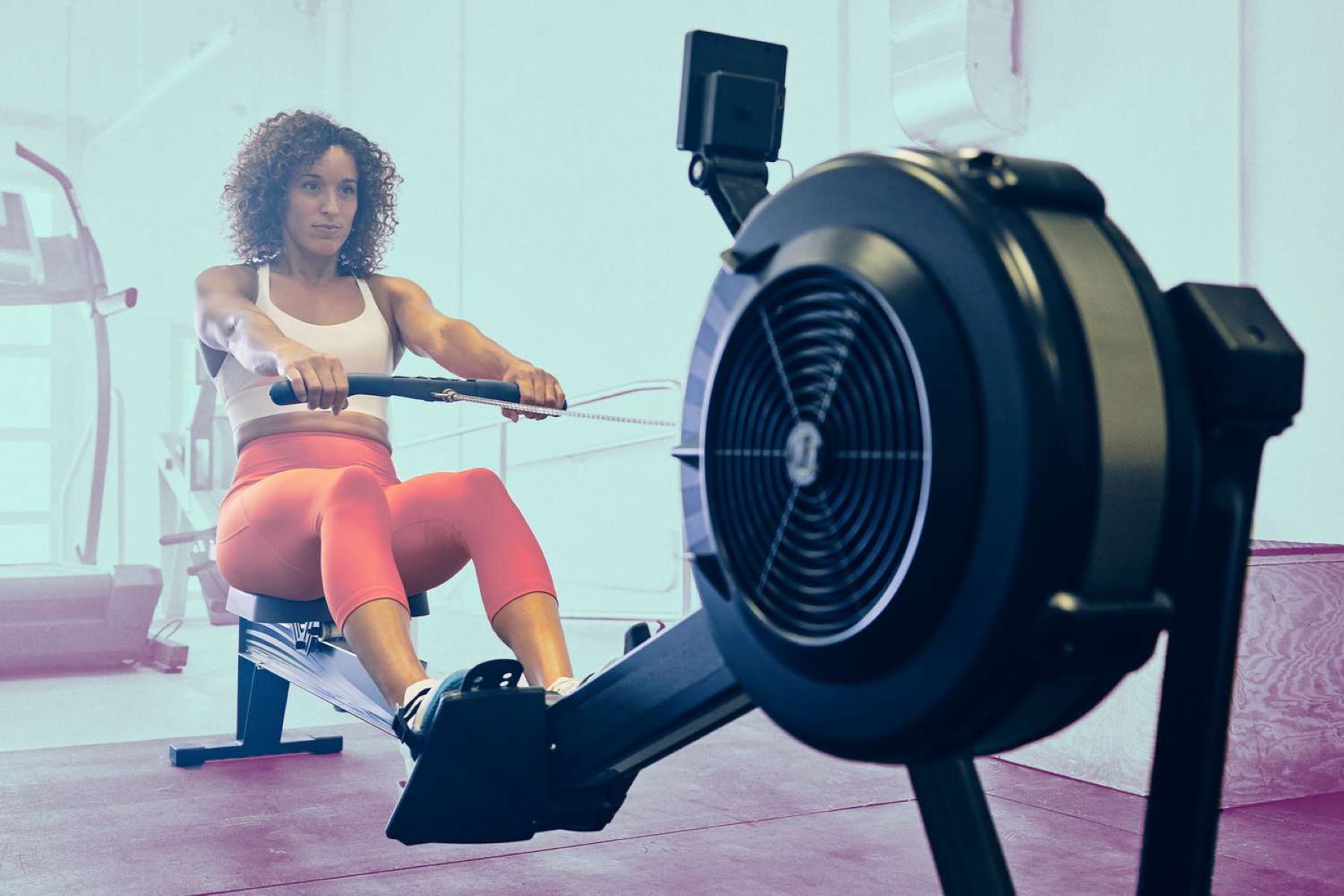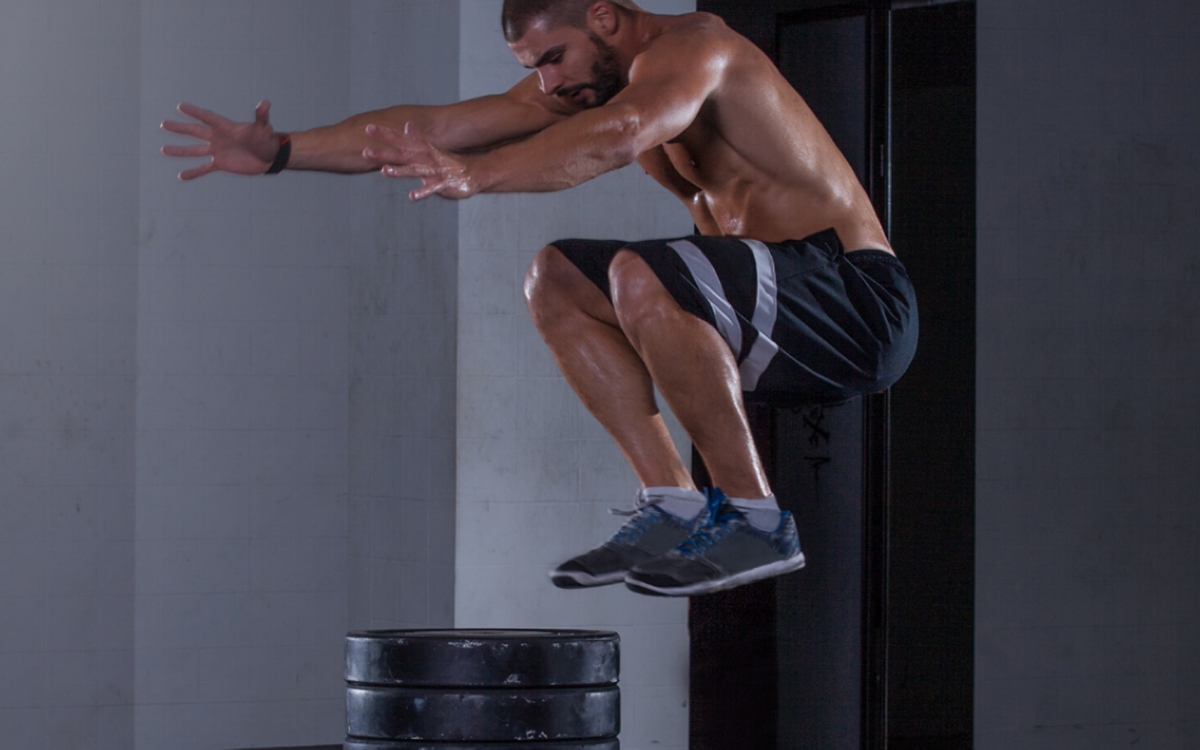

Featured
What Exercise Makes You Jump Higher
Published: September 27, 2023
Discover the featured exercise that can help you increase your vertical jump. Find out how to jump higher in this comprehensive guide.
Introduction
Having the ability to jump higher can be a game-changer in various sports and athletic activities. Whether you’re a basketball player looking to slam dunk, a volleyball player aiming for a powerful spike, or a track and field athlete trying to improve your long jump, increasing your vertical leap can give you a competitive edge. But what exercise can help you achieve this goal?
In this article, we will explore the different exercises that can help you improve your jumping ability and increase your vertical leap. We will delve into the factors that influence your vertical jump, such as muscle fiber composition and explosive power. By understanding these factors, you will be able to tailor your training routine to maximize your jumping potential.
Jumping ability is a crucial aspect of many sports. Being able to jump higher enables you to reach higher heights, which can directly impact your performance. It allows you to out-jump your opponents, elevate above defenders, and execute acrobatic movements that can impress both teammates and spectators.
While genetics and natural athletic abilities play a role in determining your jumping ability, it is essential to know that it can also be improved through targeted training. By incorporating specific exercises into your fitness routine, you can increase your explosive power, leg strength, and overall vertical leap.
In the following sections, we will explore different exercises that can help you jump higher. From plyometric exercises to strength training movements, we will provide you with a comprehensive guide on how to boost your jumping abilities. Whether you are a beginner looking to take your first leap or an experienced athlete aiming to reach new heights, this article will equip you with the knowledge and exercises necessary to enhance your vertical jump.
Importance of Jumping Ability in Sports
Jumping ability is a fundamental skill that plays a vital role in numerous sports and athletic activities. The ability to jump higher can provide athletes with a significant advantage in their respective disciplines. Let’s explore the importance of jumping ability in sports.
In sports like basketball and volleyball, where height and explosiveness are crucial, the ability to jump higher can be a game-changer. A higher vertical leap allows basketball players to rise above their opponents, grab rebounds, and successfully execute powerful dunks. Likewise, volleyball players with exceptional jumping ability can spike the ball with more force and accuracy, making it harder for the opposing team to defend.
Track and field events such as the long jump and high jump heavily rely on jumping ability. Athletes competing in these events aim to cover longer distances horizontally or clear higher heights vertically. The more explosive their jumps, the greater the likelihood of achieving favorable outcomes.
Even in sports like soccer and football, having a good jumping ability can give players an advantage in various situations. From winning headers in aerial duels to leaping over opponents to make catches or interceptions, athletes with superior leaping abilities can make significant impacts.
Besides the obvious benefits in specific sports, developing the ability to jump higher can also contribute to overall athletic performance. Effective jumping mechanics require strength, power, and coordination, which can enhance an athlete’s agility and overall body control. These attributes can improve performance in various athletic movements, such as sprinting, change of direction, and balance.
Furthermore, developing a higher vertical leap can help prevent injuries. Weaker muscles and poor jumping mechanics can put additional stress on the joints, increasing the risk of sprains or other related injuries. By strengthening the muscles involved in jumping and optimizing technique, athletes can minimize the risk of these injuries.
Whether you’re striving to be a top-notch basketball player, compete in track and field events, or excel in any other sport, having a good jumping ability is a valuable asset. It can elevate your game by providing an edge over your opponents and unlocking new possibilities on the field or court.
Now that we understand the significance of jumping ability in sports, let’s explore the factors that influence vertical leap and the exercises that can help you improve your jumping ability.
Factors Influencing Jumping Ability
Jumping ability is influenced by various factors that determine an athlete’s vertical leap. Understanding these factors is crucial in tailoring an effective training program to improve jumping ability. Let’s explore the key factors that impact an athlete’s jump height.
One important factor is muscle fiber composition. Type II muscle fibers, also known as fast-twitch muscle fibers, are responsible for generating explosive power and force. Athletes with a higher percentage of fast-twitch muscle fibers tend to have greater jumping abilities. These muscle fibers contract rapidly and generate high amounts of force, allowing for powerful vertical leaps.
Another factor to consider is lower body strength. Strong leg muscles, such as the quadriceps, hamstrings, and calves, are essential for generating force during takeoff and achieving maximum jump height. By incorporating strength training exercises like squats, lunges, and calf raises, athletes can improve their lower body strength, ultimately leading to increased vertical leap.
Explosive power is also a critical factor in jumping ability. It refers to the ability of muscles to generate force quickly. Plyometric exercises, such as jump squats and box jumps, are effective for improving explosive power. These exercises involve rapid muscle contractions and stretch-shortening cycles, training the muscles to generate powerful jumps.
Technique and form play a significant role in maximizing jump height. Proper jumping mechanics, including proper takeoff, arm swing, and body positioning, can optimize the force generated and lead to higher jumps. Athletes should focus on refining their technique and seek guidance from coaches or trainers to ensure they are using the most efficient mechanics.
Additionally, body composition can influence jumping ability. Excess body fat can hinder an athlete’s vertical leap due to the added weight and increased resistance. Maintaining a lean body composition through proper nutrition and regular exercise can improve jumping performance.
Lastly, flexibility and mobility are essential for executing optimal jumps. A lack of flexibility can restrict the range of motion and limit the ability to generate force during takeoff. Stretching exercises targeted at improving flexibility, particularly in the hips, knees, and ankles, can contribute to greater jump height.
By considering these factors and incorporating exercises and training techniques that address them, athletes can enhance their jumping ability. Now, let’s dive into specific exercises that can help improve vertical leap.
Understanding Muscle Fiber Composition
To enhance your jumping ability, it’s crucial to understand the role of muscle fiber composition in generating explosive power and force. Muscle fibers can be categorized into two main types: slow-twitch (type I) fibers and fast-twitch (type II) fibers.
Slow-twitch muscle fibers are more endurance-oriented and are primarily involved in activities such as long-distance running or maintaining posture. They have a higher aerobic capacity and are resistant to fatigue. However, when it comes to generating explosive power for jumping, fast-twitch muscle fibers are the key players.
Fast-twitch muscle fibers are further classified into type IIa and type IIb, with type IIb being the fastest and most powerful. These fibers contract quickly and generate high levels of force, making them particularly important for explosive movements like vertical jumping.
The distribution of muscle fiber types in an individual’s body is largely determined by genetics. Some people naturally have a higher proportion of fast-twitch muscle fibers, which gives them a predisposition for better jumping ability. However, it’s important to note that muscle fiber composition can also be influenced by training and exercise selection.
While we can’t change our genetic makeup, we can optimize our muscle fiber potential through targeted training. Plyometric exercises, which involve rapid, explosive movements, are especially effective for recruiting and developing fast-twitch muscle fibers. These exercises can stimulate muscle adaptation and increase the proportion of fast-twitch fibers in the muscles involved in jumping, leading to improved jumping performance.
In addition to plyometrics, strength training exercises can also influence muscle fiber composition. Compound exercises like squats and deadlifts, which involve multiple muscle groups, can help develop overall lower body strength and power. By increasing overall muscle mass and strength, athletes can improve their jumping ability.
It’s important to consider that different individuals may respond differently to training and have varying proportions of muscle fiber types. This means that training programs should be tailored to individual needs and goals. Some athletes may benefit from focusing more on explosive plyometric exercises, while others may require a balance of strength training and plyometrics to optimize muscle fiber recruitment.
Understanding your own muscle fiber composition and tailoring your training program accordingly can help you maximize your jumping potential. By incorporating exercises that specifically target the development of fast-twitch muscle fibers and optimizing overall lower body strength, you can enhance your explosive power and achieve greater jump heights.
Now that we have a better understanding of muscle fiber composition, let’s explore the specific exercises that can help improve your vertical leap.
Plyometric Exercises for Improving Jump Height
Plyometric exercises are highly effective for improving jump height and enhancing explosive power in the muscles involved in jumping. These exercises involve rapid muscle lengthening followed by a quick contraction, which trains the muscles to generate greater force and power. Let’s explore some plyometric exercises that can help you improve your vertical leap.
1. Squat jumps: Begin in a squat position with your feet shoulder-width apart. Explosively jump as high as you can while extending your arms overhead. Land softly back into the squat position and immediately repeat the jump. Squat jumps strengthen the lower body muscles and improve explosive power.
2. Box jumps: Stand in front of a sturdy box or platform. Bend your knees and jump onto the box, landing softly with both feet. Step down and repeat. As you become more proficient, increase the height of the box to challenge yourself further and increase your jump height.
3. Jump lunges: Start in a lunge position with one foot forward and the other foot stretched behind you. Jump explosively, switching the position of your feet mid-air and landing in a lunge position with the opposite foot forward. Repeat the exercise, alternating legs. Jump lunges improve lower body strength, power, and agility.
4. Depth jumps: Find a sturdy elevated platform or bench. Step off the platform, landing with both feet simultaneously on the ground. Immediately upon landing, explode upward into a maximum vertical jump. Depth jumps train the muscles to rapidly generate force and power, leading to increased jump height.
5. Power cleans: Power cleans are a compound exercise that involves lifting a barbell from the floor to shoulder height in one explosive motion. This exercise targets multiple muscle groups, including the legs, hips, and upper body, and improves explosive power, which directly translates to improved jumping ability.
When performing plyometric exercises, it’s important to prioritize quality over quantity. Focus on performing each movement explosively and with proper form. Start with a lower intensity and gradually increase the intensity and difficulty as your strength and power improve.
Additionally, remember to warm up adequately before performing plyometric exercises and allow for sufficient recovery time between sessions. Plyometric exercises place significant stress on the muscles and joints, so proper rest and recovery are essential to prevent injury.
By incorporating plyometric exercises into your training routine, you can enhance your explosive power and improve your vertical leap. Remember to consult with a qualified fitness professional to ensure proper technique and to customize your plyometric training program to your specific needs and goals.
Now that you have a range of plyometric exercises to choose from, it’s time to take your jumping ability to new heights.
Squat Jumps
Squat jumps are a highly effective plyometric exercise for improving jump height and developing explosive power in the lower body. This exercise targets the quadriceps, hamstrings, glutes, and calves, which are the primary muscles involved in generating force during a vertical leap. Let’s delve into the details of how to perform squat jumps and the benefits they offer.
To perform squat jumps, start by standing with your feet shoulder-width apart. Lower your body into a squat position by bending your knees and pushing your hips back. Keep your chest lifted and your back straight throughout the movement. From this squat position, explosively jump as high as you can, extending your arms overhead for momentum. Land softly back into the squat position and immediately repeat the jump.
Squat jumps are a dynamic exercise that effectively targets both the muscle strength and explosive power necessary for vertical jumping. By incorporating squat jumps into your training routine, you can achieve several benefits:
- Improved leg strength: Squat jumps primarily target the muscles in the lower body, including the quads, hamstrings, glutes, and calves. The explosive jumping motion engages these muscles, leading to increased strength and power in the legs.
- Increased explosive power: The explosive nature of squat jumps translates directly to improved explosive power, which is vital for achieving greater jump height. By repeatedly exploding upwards in the jump, you train your muscles to generate force rapidly.
- Enhanced jump height: Squat jumps directly mimic the motion of a vertical leap, making them an excellent exercise for improving jump height. By repeatedly practicing the explosive jumping motion, you strengthen the muscles involved in jumping, leading to higher vertical leaps.
- Improved coordination: Squat jumps require coordination between the lower body and upper body. The simultaneous use of the arms helps generate momentum and adds to the explosiveness of the jump. This exercise enhances overall coordination and body control.
- Cardiovascular benefits: Squat jumps are an intense exercise that gets your heart rate up, providing cardiovascular benefits. It can help improve your endurance and stamina, allowing you to perform at high-intensity levels for longer periods.
When performing squat jumps, it’s important to focus on technique and form. Ensure that you’re lowering into a deep squat position and exploding upward with maximum force. Maintain proper alignment, keep your core engaged, and land softly to absorb the impact and prevent injury.
Incorporate squat jumps into your training routine 2-3 times a week, starting with a few sets of 10-15 repetitions and gradually increasing intensity and volume as you progress. However, be mindful of your own fitness level and listen to your body. If you experience any pain or discomfort, consult with a qualified fitness professional for guidance.
By incorporating squat jumps into your workouts, you can strengthen your lower body, increase explosive power, and ultimately improve your jump height. So, lace up your shoes, find a suitable training area, and get ready to elevate your vertical leap with squat jumps.
Box Jumps
Box jumps are a powerful plyometric exercise that can tremendously improve your jump height and explosive power. This exercise primarily targets the muscles in your lower body, including the quadriceps, hamstrings, glutes, and calves. Box jumps require you to jump onto a sturdy box or platform, simulating a vertical leap. Let’s dive into the details of how to perform box jumps and the benefits they offer.
To execute a box jump, start by standing in front of a sturdy box or platform. Begin with a slight bend in your knees and hinge at your hips. Explosively jump off both feet, propelling yourself upwards as forcefully as possible. Aim to land softly on top of the box, using your leg muscles to absorb the impact. Step down carefully and repeat the jump immediately.
Box jumps offer several benefits that can significantly enhance your vertical leap and athletic performance:
- Increased explosive power: Box jumps are a highly explosive exercise that trains your muscles to generate maximum force in a short period. The rapid extension of your hips, knees, and ankles during this exercise helps develop explosive power essential for higher vertical jumps.
- Improved jump height: By repeatedly practicing box jumps, you’re training and strengthening the muscles involved in a vertical leap. The explosive nature of this exercise combined with the focus on landing softly increases jump height and overall jumping ability.
- Enhanced lower body strength: Box jumps engage the major muscles in your lower body, including the quadriceps, hamstrings, glutes, and calves. Regularly performing box jumps can lead to improved leg strength, which is vital for generating power during a vertical leap.
- Enhanced balance and coordination: To successfully execute a box jump, you must maintain proper balance and coordination throughout the movement. This exercise challenges your body’s ability to synchronize the jump and landing, leading to enhanced overall balance and body control.
- Cardiovascular benefits: Box jumps are a high-intensity exercise that elevates your heart rate, providing cardiovascular benefits. Incorporating box jumps into your workouts helps improve cardiovascular endurance, allowing you to perform at higher intensity levels for longer durations.
When incorporating box jumps into your training routine, start with a box height that is challenging but attainable. As you become more comfortable and proficient, gradually increase the height of the box to continually progress and challenge yourself. It’s crucial to focus on proper technique and form, including landing softly on the box and minimizing stress on your joints.
As with any plyometric exercise, it is essential to warm up properly before performing box jumps and allow for adequate rest and recovery between sessions. Listen to your body and avoid pushing yourself too hard, especially if you are new to plyometric training.
Box jumps provide an effective and dynamic way to enhance your jump height and explosive power. By incorporating them into your training routine regularly, you can reap the benefits of stronger legs, improved coordination, and an increased vertical leap. So, find a sturdy box or platform, get ready to leap, and elevate your jumping ability with box jumps!
Jump Lunges
Jump lunges are a dynamic and explosive exercise that targets the lower body, specifically the quadriceps, hamstrings, glutes, and calves. This plyometric exercise helps improve explosive power, lower body strength, and agility, all of which contribute to enhancing your jump height. Let’s delve into the details of how to perform jump lunges and the benefits they offer.
To perform jump lunges, start by standing with your feet hip-width apart. Take a large step forward with your right foot and lower your body into a lunge position, ensuring that your right knee is directly above your ankle and your back knee is hovering just off the ground. From this position, explosively jump off the ground, switching the position of your legs mid-air. Land softly with your left foot forward and your right foot stretched behind you in a lunge position. Repeat the exercise, alternating legs.
Jump lunges offer several benefits that can significantly improve your vertical leap and overall athleticism:
- Increased lower body strength: Jump lunges target the muscles in your lower body, particularly the quads, hamstrings, glutes, and calves. The explosive jumping motion engages these muscles, leading to increased strength and power in the legs.
- Improved explosive power: The explosive nature of jump lunges helps train your muscles to generate force rapidly. The rapid switch of legs in mid-air challenges your muscles to produce explosive power, which directly translates to improved jumping ability.
- Enhanced jump height: The jumping motion of jump lunges closely mimics the mechanics of a vertical leap. By repeatedly practicing this explosive movement, you strengthen the muscles involved in jumping, ultimately leading to higher jump heights.
- Increased agility and coordination: Jump lunges require coordination between the lower body and core stability to maintain balance and control throughout the movement. Regularly performing this exercise can enhance overall agility and coordination, which are crucial for executing powerful jumps.
- Cardiovascular benefits: Jump lunges are a high-intensity exercise that elevates your heart rate, providing cardiovascular benefits. Incorporating jump lunges into your training routine helps improve cardiovascular endurance, allowing you to perform at higher intensity levels for longer periods.
When incorporating jump lunges into your workout routine, start with a few sets of 8 to 10 repetitions on each leg, gradually working your way up to higher volume and intensity. Focus on explosive jumps, maintaining proper form, and landing softly to minimize the impact on your joints.
It’s essential to warm up adequately before performing jump lunges and allow for sufficient rest and recovery between sessions. Listen to your body and modify the exercise as needed to prevent any discomfort or strain.
Jump lunges provide a challenging and effective way to increase lower body strength, explosive power, and agility, all of which can significantly improve your jump height. So, add jump lunges to your training routine and get ready to elevate your vertical leap to new heights.
Depth Jumps
Depth jumps are an advanced plyometric exercise that can greatly enhance your explosive power and improve your vertical jump. This exercise focuses on training the muscles to rapidly generate force and power, leading to increased jump height. Let’s dive into the details of how to perform depth jumps and the benefits they offer.
To perform a depth jump, find a sturdy elevated platform or bench. Begin by standing on the edge of the platform, toes at the edge and heels hanging off. Step off the platform and allow yourself to drop down to the ground. As soon as you land, immediately explode upward into a maximum vertical jump. Focus on pushing off the ground with maximum force and reaching for maximum height.
Depth jumps offer several benefits that can significantly improve your vertical leap:
- Increased explosive power: Depth jumps are an intense exercise that challenges your muscles to generate maximum force in a short period. The rapid transition from landing to jumping forces your muscles to contract forcefully, thereby improving explosive power.
- Enhanced jump height: By training your muscles to rapidly generate force, depth jumps can directly translate to improved jump height. The explosive nature of this exercise helps strengthen the lower body muscles involved in jumping and teaches the body to generate more power during takeoff.
- Improved proprioception and body control: Depth jumps require coordination and control to land softly and transition into an explosive jump. Regularly performing this exercise can improve your proprioception and body control, leading to better balance and form during jumps.
- Increased reactive strength: Depth jumps require a rapid eccentric (lengthening) phase followed by an explosive concentric (shortening) phase. This rapid transition helps develop reactive strength, which is crucial for explosive movements like jumping.
- Advanced plyometric progression: Depth jumps are considered an advanced plyometric exercise and can help take your training to the next level. They provide a higher level of intensity and challenge for athletes looking to further develop their explosive power and jump height.
When incorporating depth jumps into your training routine, it’s essential to start with a lower platform height and gradually increase the height as you become more comfortable and proficient. Focus on proper landing mechanics, aiming to land softly and with proper form to reduce the impact on the joints.
Due to the high-intensity nature of depth jumps, it’s crucial to have a solid foundation of strength and conditioning before attempting them. If you’re new to plyometric training or have any concerns, it’s best to consult with a qualified fitness professional who can guide you with proper technique and progression.
Depth jumps provide a unique and effective way to improve your vertical jump by developing explosive power, reactive strength, and body control. Incorporate this advanced plyometric exercise into your training routine, and get ready to reach new heights with your jump!
Power Cleans
Power cleans are a compound exercise that targets multiple muscle groups, including the legs, hips, and upper body. This exercise helps improve explosive power and overall strength, both of which are essential for increasing jump height. Let’s delve into the details of how to perform power cleans and the benefits they offer.
To perform a power clean, start with a barbell on the ground in front of you. Stand with your feet shoulder-width apart and hinge at the hips, grabbing the barbell with an overhand grip. Keeping your back straight, drive through your legs and explosively extend your hips, knees, and ankles, pulling the barbell off the floor. As the barbell reaches hip level, quickly pull the elbows under the barbell and “catch” it at shoulder height, slightly squatting to absorb the impact. Stand up with the barbell using the power generated from your legs.
Power cleans offer several benefits that can significantly enhance your vertical leap:
- Increased explosive power: Power cleans are an explosive exercise that requires a rapid and powerful extension of the hips, knees, and ankles. The explosive nature of this movement helps develop fast-twitch muscle fibers, which are crucial for generating force and power during a vertical jump.
- Enhanced full-body strength: Power cleans are a compound exercise that engages multiple muscle groups, including the muscles in your legs, hips, back, and shoulders. Regularly incorporating power cleans into your training routine can lead to increased overall strength and a more powerful jump.
- Improved coordination and motor control: Power cleans require coordination and timing to execute the movement properly. The simultaneous coordination of the lower body, upper body, and core stability helps improve overall motor control and coordination, which translates to better jumping ability.
- Increased grip strength: Power cleans also require a strong grip to hold onto the barbell throughout the movement. Improved grip strength can have a positive impact on various athletic activities, including jumping and other explosive movements.
- Improved mobility and flexibility: Power cleans require a good range of motion in the hips, knees, and ankles. Regularly performing this exercise can help improve your mobility and flexibility in these areas, which can directly impact your jumping ability.
When incorporating power cleans into your training routine, start with lighter weights and focus on mastering the technique and form. Proper form is crucial to prevent injury and maximize the benefits of the exercise. Gradually increase the weight as your strength and proficiency improve.
Due to the complexity of the power clean exercise, it’s essential to learn from a qualified strength and conditioning professional or coach who can guide you through proper technique and progression.
Power cleans provide a comprehensive full-body exercise that develops explosive power, strength, and coordination. Incorporate this dynamic movement into your training routine to enhance your vertical leap and overall athletic performance. So, grab a barbell, practice proper technique, and get ready to elevate your jumping ability with power cleans!
Conclusion
Improving your jumping ability is a valuable asset in various sports and athletic activities. By focusing on exercises that target explosive power, lower body strength, and overall coordination, you can enhance your vertical leap and take your performance to new heights.
In this article, we explored the importance of jumping ability in sports and the factors that influence jump height, such as muscle fiber composition and lower body strength. By understanding these factors, you can tailor your training program to optimize your jumping potential.
Plyometric exercises, such as squat jumps, box jumps, jump lunges, depth jumps, and power cleans, are effective for increasing explosive power and overall jump height. These exercises engage the muscles involved in jumping and improve your ability to generate force rapidly.
Squat jumps target the lower body muscles while improving leg strength and explosive power. Box jumps challenge your explosive capabilities and coordination, enhancing jump height and overall athleticism. Jump lunges improve lower body strength, agility, and coordination. Depth jumps develop reactive strength and train muscles to generate force quickly. Power cleans are a full-body exercise that increases explosive power and strength.
Remember, when incorporating these exercises into your routine, start with proper warm-up and gradually progress in intensity and volume. Prioritize quality over quantity, focusing on explosive movements and proper form to maximize your results while minimizing the risk of injury.
Additionally, complementing these exercises with a comprehensive strength and conditioning program, a balanced diet, and sufficient rest and recovery will aid in achieving optimal results.
Whether you’re an aspiring athlete or a recreational enthusiast, improving your jumping ability can have a significant impact on your overall performance. So, lace up your shoes, find a suitable training area, and start incorporating these exercises into your workout routine. With dedication, consistency, and the right training approach, you’ll be well on your way to reaching new heights in your vertical leap.
